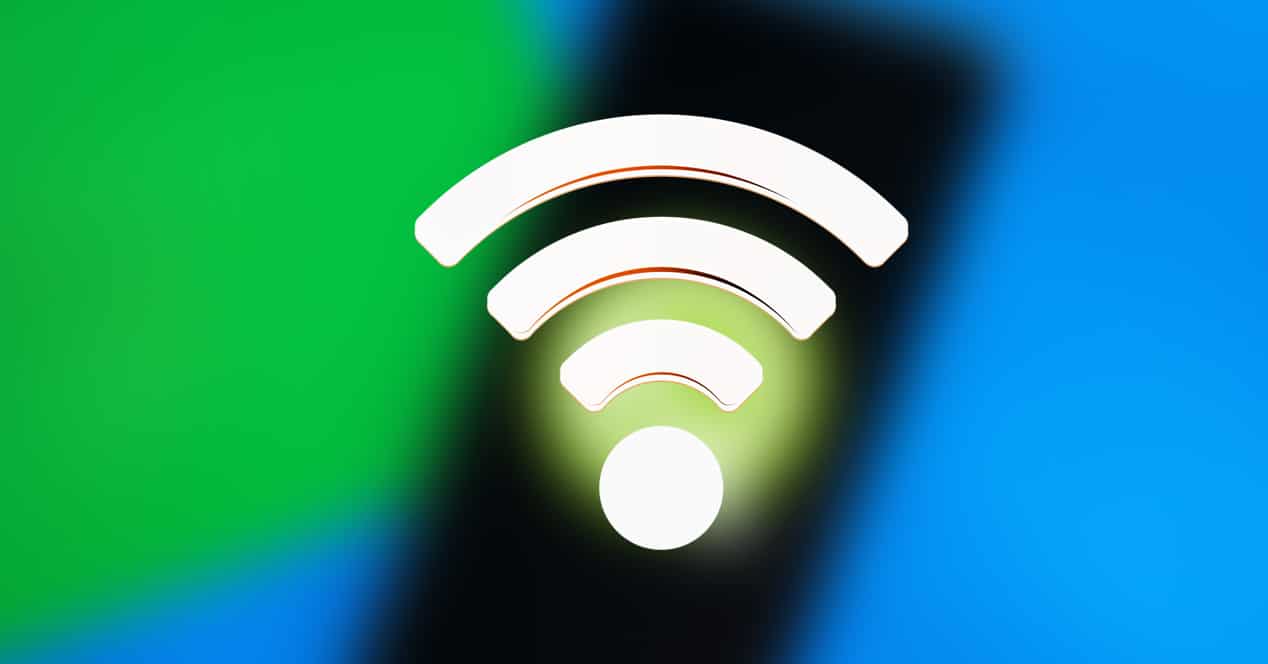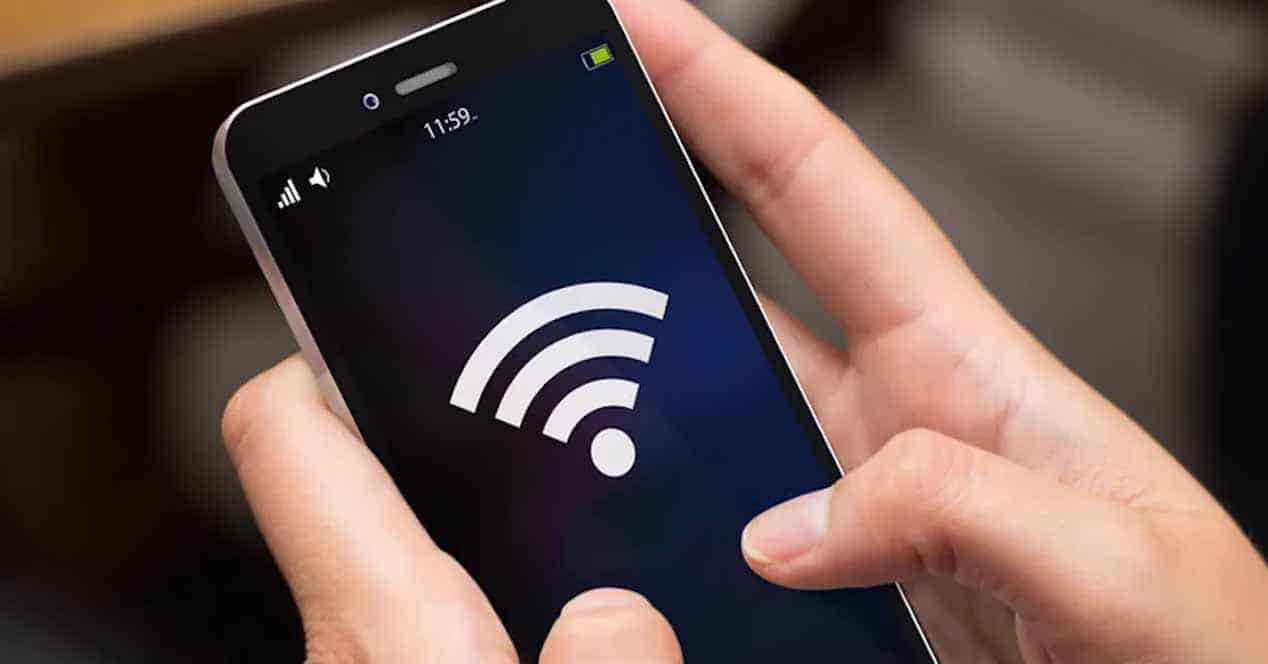
The term Hotspot is something known to most. If someone asks us what a Hotspot is, we know that it is an Internet access point, in many cases available in public places. Although many do not also know that we have different types available, so we can have different options when connecting to the Internet.
Next we will tell you what a hotspot is, as well as we talk about the types that there are. Since the existence of several types is something that many do not know, but it is good to know what they are or the differences between them. Although these differences are not too many, so we can have all the data about this connection without cables.
What is a hotspot

The hotspot is a point of access to the Internet through a wireless network. This is a connection that works like the router in our homes, only in these cases it is something that is located in a public place and is designed so that a large number of devices can connect to the same network or connection point. access at the same time. But on paper it works just like any other wireless network.
This hotspot is somewhat available for any device with internet access. That is, we can connect from the mobile, the computer or from the tablet to it. This is a technology that has been present among us for many years and that we find especially in public places such as universities, cafeterias, libraries, stations and hotels.
The idea is that these devices that are in that location can connect to the Internet using that wireless network. It is something ideal in those moments in which we cannot use mobile data, because we have consumed all of it, we have poor coverage or we are in a country other than our own, where said navigation can cost us a lot of money, for example. Then we can connect to a hotspot that is available near us.
Hotspot Types

Now that we know what is the hotspot the next step is to know what types there are of it. Currently we can divide it into three types, which are usually differentiated by the origin of the network, or origin of the access point, as well as its location or whether or not you have to pay money to have access to it. But in general, the operation is the same in all cases. We tell you more about these types below.
Public Wi-Fi hotspots
A WiFi hotspot is a type of public hotspot, that is, it is one that we meet in a public place. It is the type that we find in a university, library, but also in an airport or a station. In most cases it is a network to which we are going to be able to connect without having to pay money or at least we can use it without having to pay money for a while, it may have to be paid after a while .
This is a network that has a large reach, since it is usually available in the entirety of that location, that is, if it is a network in a library, it must reach all the zones or all the floors of the same. Although the intensity of the signal received is something that will vary, depending on the location of the router used and the presence of accessories that intensify the signal or not. In any case, it is a network designed so that a huge number of people can use it at the same time.
When we connect to this type of hotspot, we may be asked to log in, simply confirming that we want to connect, while in other cases it will be something that we do not have to do. So when this network is chosen, we will connect to it automatically and you can then navigate.
Mobile WiFi Hotspots
The second type of hotspot is something that can be done from the mobile or tablet, regardless of the operating system. A mobile phone or a tablet with SIM can be turned into a hotspot themselves. That is, they act as the Internet access point for other devices, which will connect to your network and can then surf the Internet. The mobile data contracted in the rate is used to make this Internet access possible for other devices.
Other devices, whether they are phones, tablets or computers, they can be connected and thus navigate. This is something that is used especially in those moments when at home or at work, the WiFi has stopped working, but we still need an Internet connection to complete some task. In this way it will be possible to finish the task in question. It is something that can be used at any time, although it will consume our mobile data, so if you have a limited rate, you have to be especially careful with its use.
Prepaid Wi-Fi Hotspots
This third type of hotspot is similar to the previous ones, but limit the amount of data that can be consumed or used with that connection. That is, we are going to have to pay a specific amount of money in advance to be able to navigate. This money can be to be able to use a specific amount of data or spend a certain time connected to said network, for example, you pay to use it for an hour.
When that quantity has been consumed or that certain time has passed, you will have to pay again, a payment that in some cases could be automatic. The operation is the same as in the first case, only now it will cost us money to use this network. It is something that we can find in airports or in hotels in some cases. So the user will have to decide if he wants to use this payment network or not.
How to use the mobile or tablet as a hotspot

The second type assumes that our device becomes that Internet access point. As we have mentioned, it is something that can be done with any type of mobile phone (Android or iOS), as well as with a tablet that has a SIM card, therefore, that has its own data rate. If you have one of these two devices, then we can use it as our own hotspot when necessary. If you have an Android phone or tablet, the steps to follow in this case are the following:
- Open the settings of your phone or tablet.
- Go to the connections section.
- Look for the option called Internet Sharing or Hotspot (each brand uses a different term for this connection).
- Activate the Internet Sharing option.
- Enter this section to see the name of the network and its password.
- On the device to connect to the network, find this network and click on it.
- Enter the access code for this network, the one that appears on the screen of your mobile.
- The connection has been established.
- To stop being connected, simply disconnect from the network or turn off this Hotspot on the mobile or tablet.
On devices from brands like Samsung, you can activate this mobile hotspot in the quick settings panel. There is an option called Shared Connection or Hotspot, which is what we can use in these cases. Especially if it is devices that we have previously linked, it will allow us to use this option more quickly.
Is it worth using the tablet as a hotspot?
Many Android tablets and iPads, generally high-end models, have an option to have a SIM card. This means that they have an associated mobile data rate, so we can browse without depending on a wireless network. This allows us to use the tablet also as a hotspot in those moments when it is necessary or desired. It is something that should be used only at specific times, we should not abuse this option if we have a limited rate.
When using the tablet as a hotspot, those mobile data of the rate are used as a network, that is, the other devices that connect to this hotspot use that data to be able to navigate. If it is something punctual and fast, the amount of data that has been consumed will not be too great. So it is something that we can use in such emergencies without any problem. If the Internet has dropped at home or at work and there is something that we must complete or that we want to save, we can resort to this method without any problem.
If you have a limited data rate, either on your mobile or tablet, it is something that we should not use too often, since you can end up consuming a lot of mobile data and nobody wants this. But for those emergencies or those users with an unlimited data rate, they will be able to take great advantage of this possibility.
